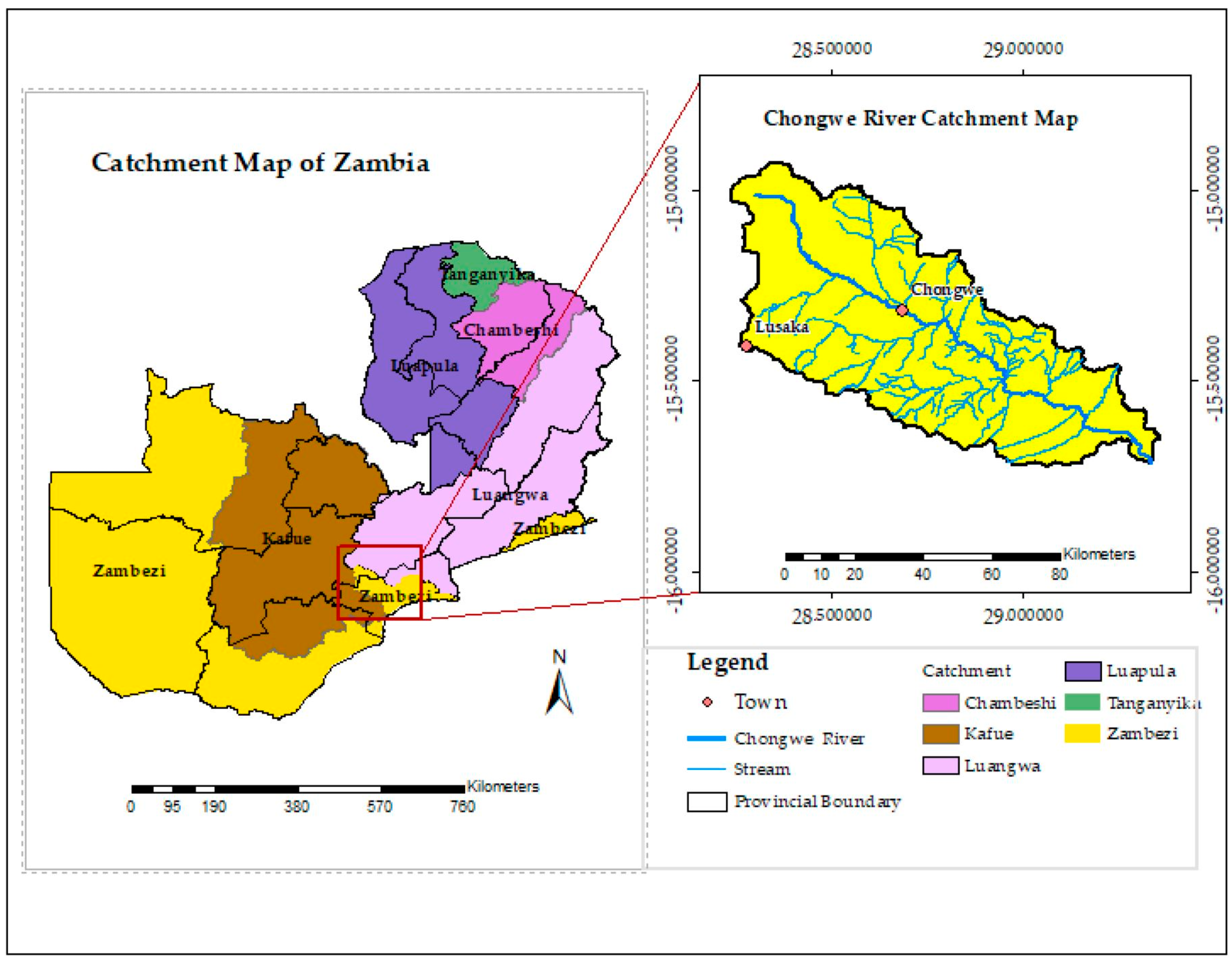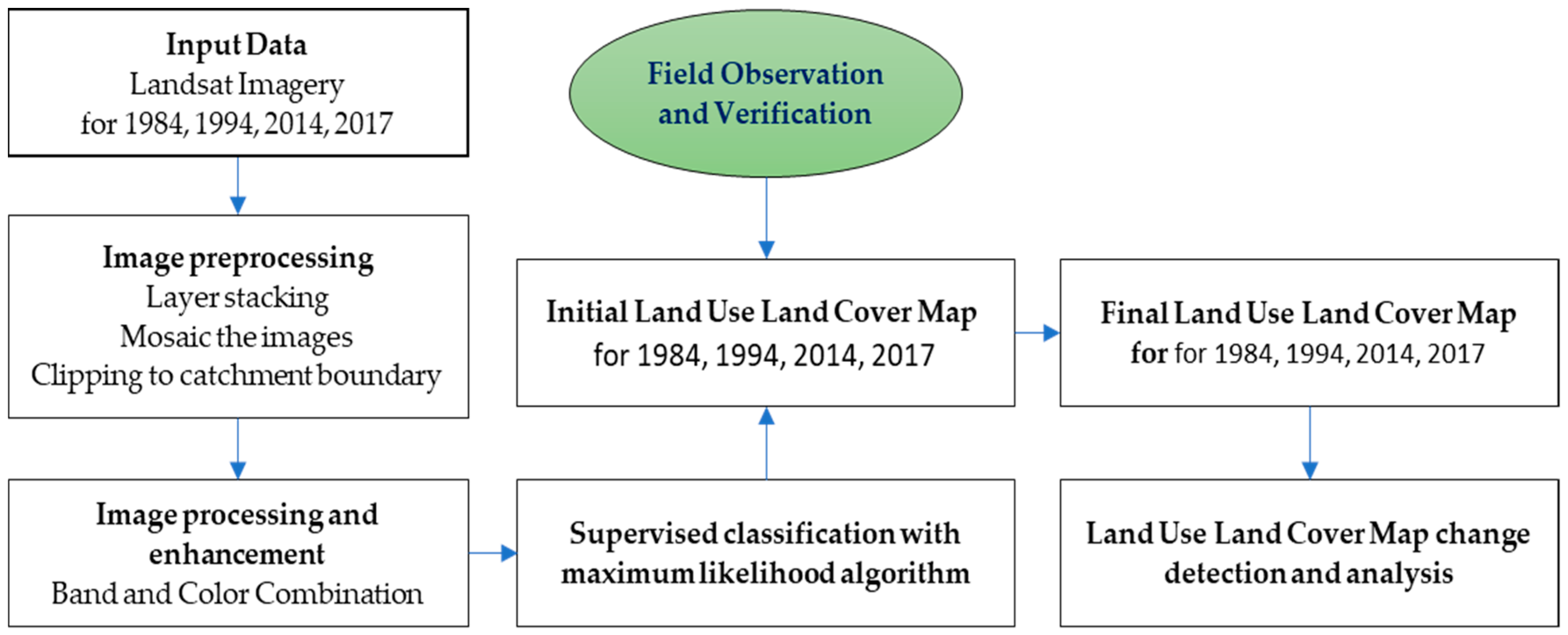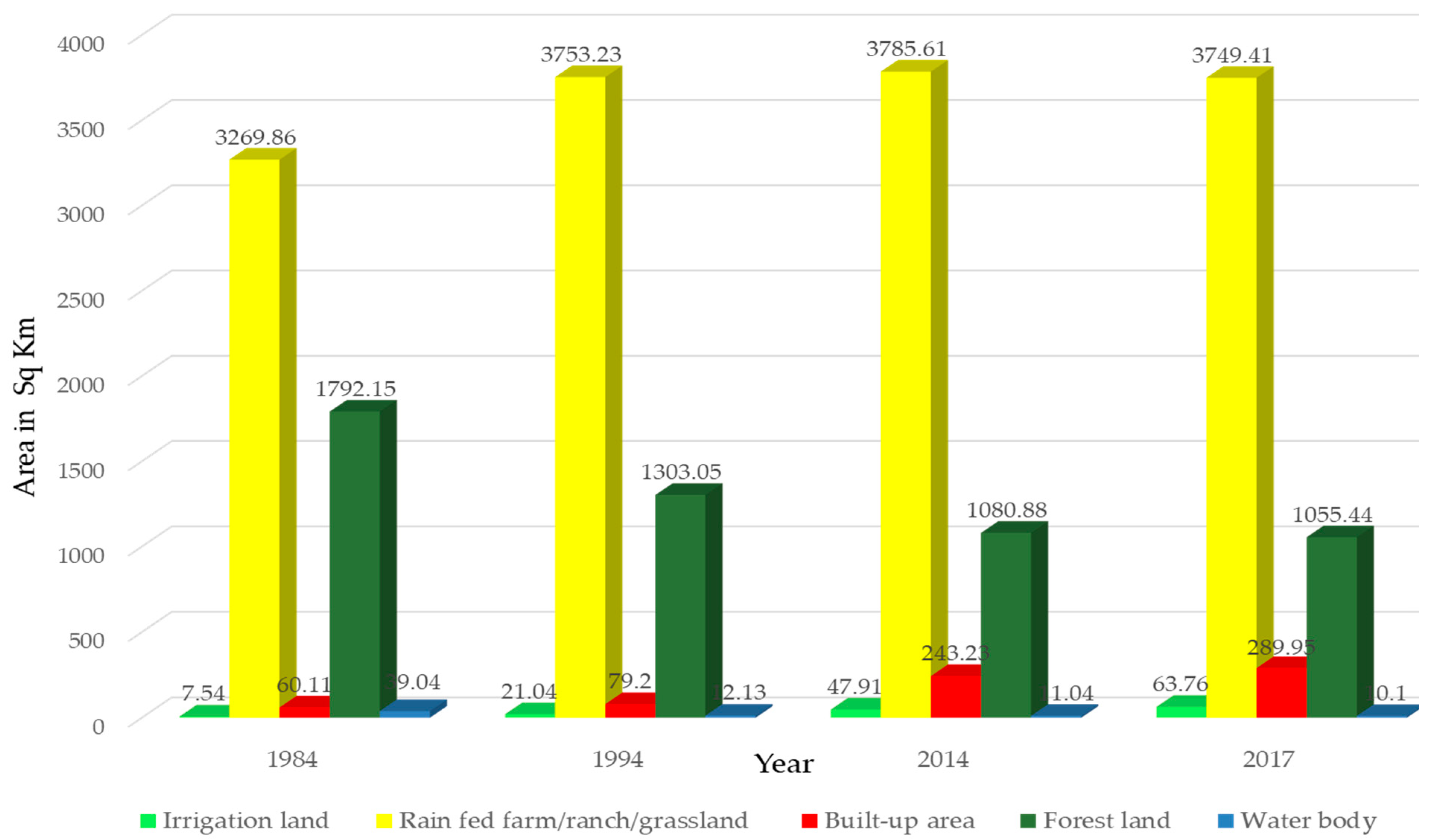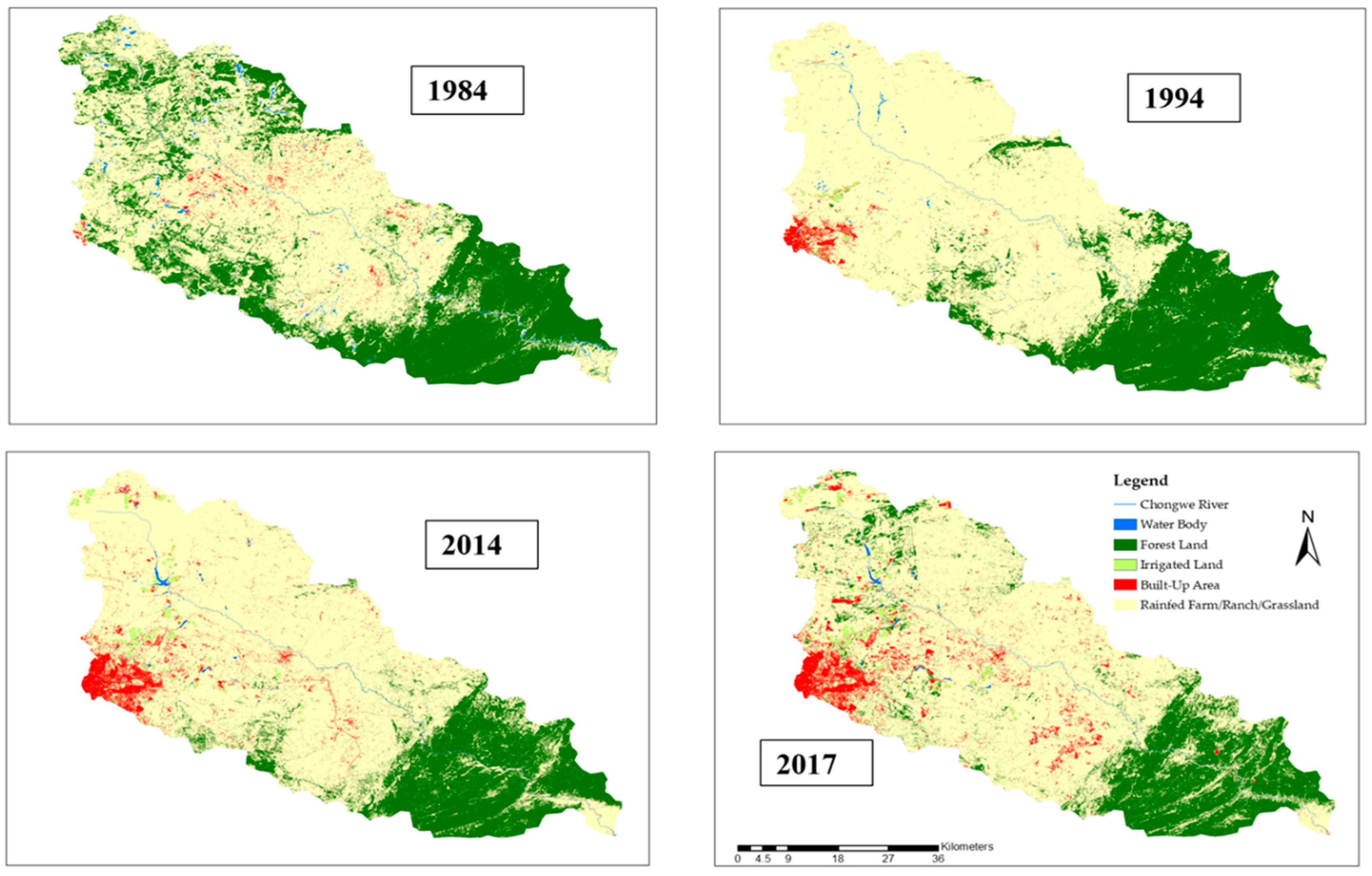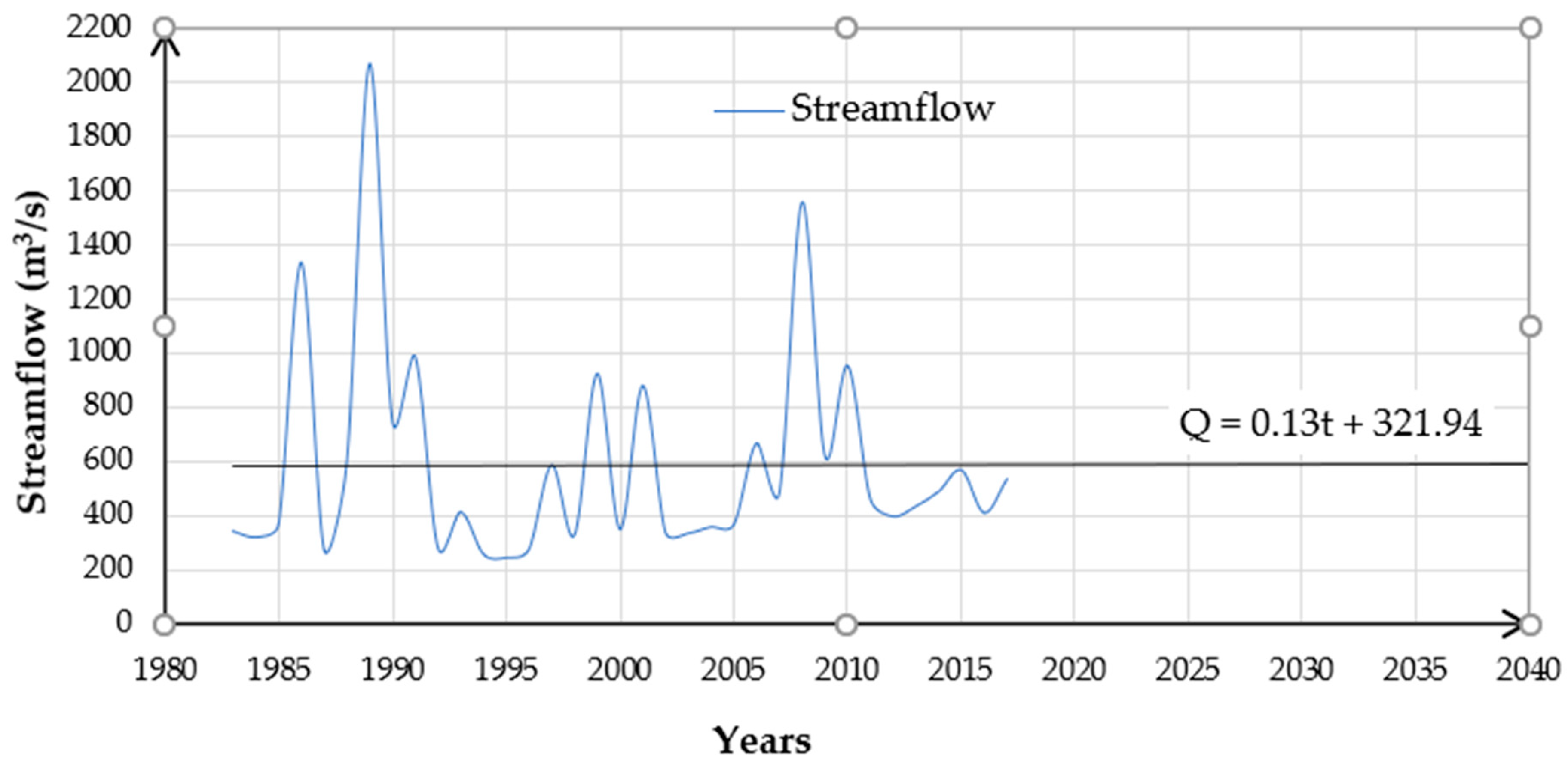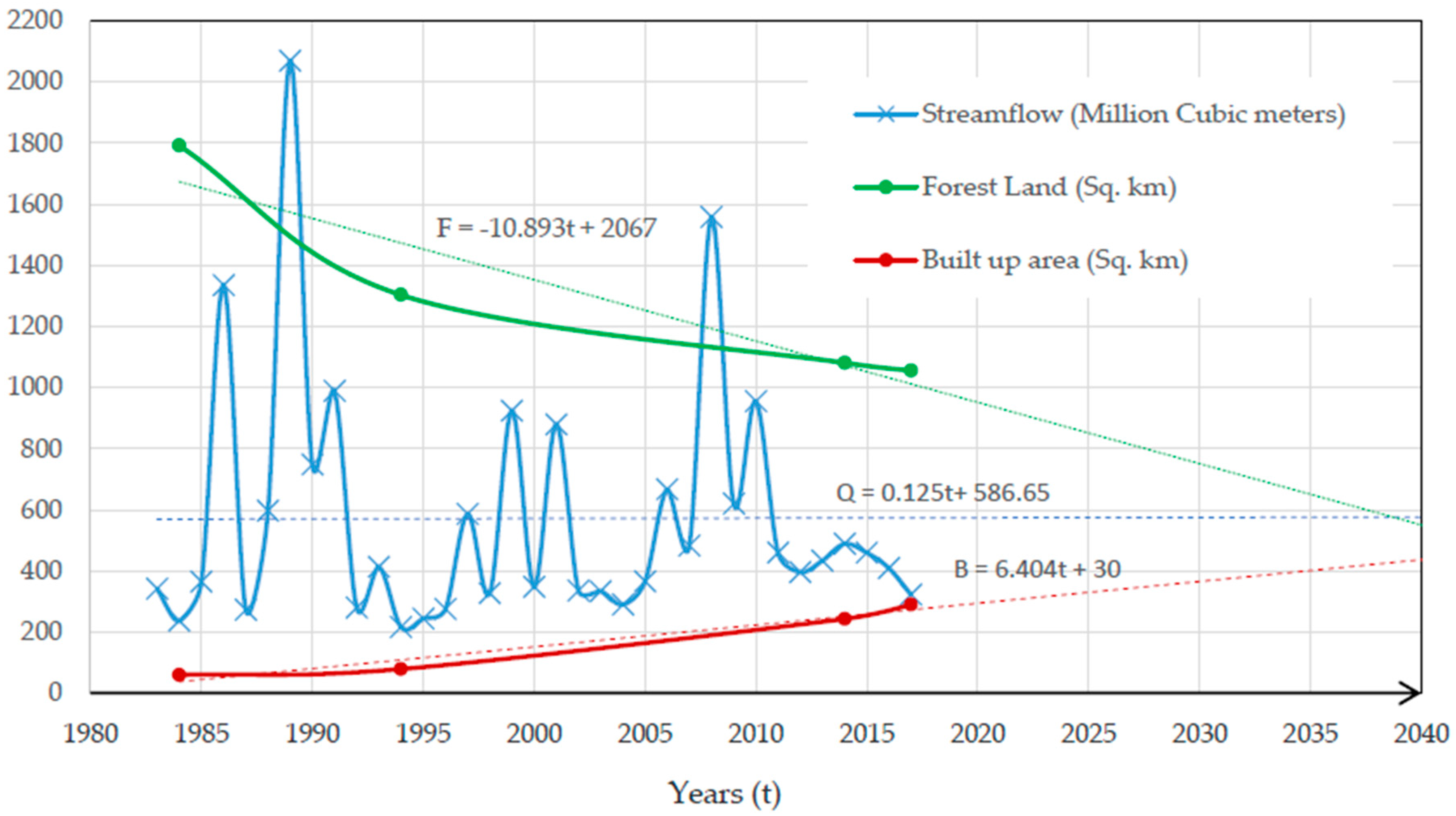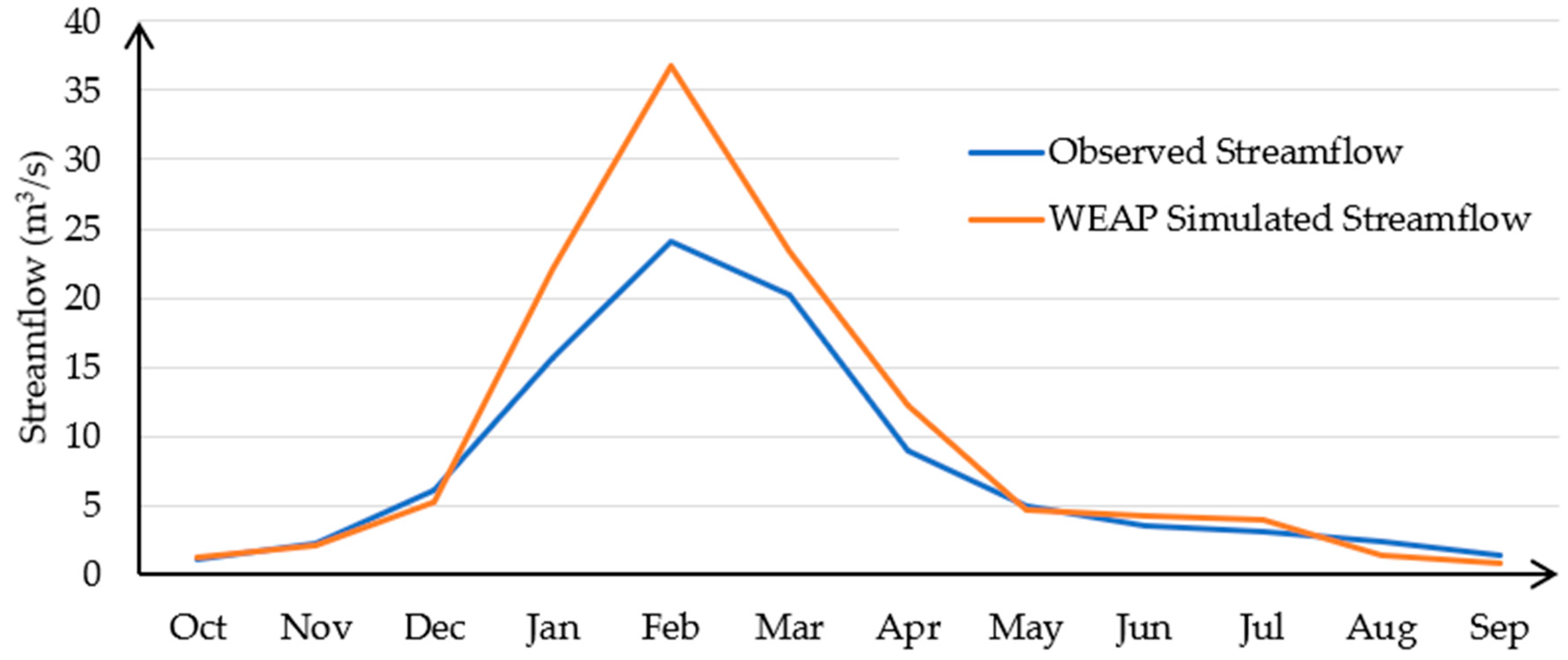1.1. Background
Land and natural resources are fundamental components of the ecosystem of a catchment that provide socio-economic and ecological functions to people [
1]. Over the years, there have been changes in land use/land cover (LULC) at local, regional and global levels resulting from natural and anthropogenic activities and leading to changes in hydrological components [
2]. Land cover is the biophysical state of the Earth’s surface and its upper subsurface, whereas land use is the utilization, human inputs and management levels on the Earth’s surface. Land use, driven by production and consumption dynamics closely tied to social, political and economic activities, leads to land cover modification. Land use affects land cover and changes in land cover affect land use [
3]. One of the most noticeable effects of the modifications of terrestrial ecosystems by human activity is LULC change and its impact on the environment locally, regionally and globally [
4].
It has been observed that over time, land cover takes certain changes that influence the topography, distribution of soil and ecology resulting in changes in the hydrological characteristics and processes [
5,
6]. LULC change is also known to modify the underlying mechanisms that transfer rainfall to water yield through altering an ecosystem’s hydrological characteristics such as infiltration, evapotranspiration, and groundwater recharge capacity [
7]. Understanding the impact of LULC change on watershed hydrology at catchment level could help to (i) identify and alleviate the occurrence of critical shifts in hydrologic processes, (ii) assess the water resources availability and their sustainable utilization under increasing population, agricultural expansion, and industrialization, and (iii) formulate appropriate policies to improve land use planning and spatial developments [
8,
9,
10]. In this regard, direct field observations and spatial–temporal analysis of LULC change from remote sensing data play a crucial role in providing historical and current information to understand the effects on river ecosystem, guide urban densification and limit unsustainable urban expansion at catchment level [
11,
12,
13].
The Chongwe River Catchment, with a population of over 834,359 people, is a sub-catchment of the Zambezi River Basin [
14,
15], and has been experiencing changes in LULC influenced by the fast-growing population, infrastructure and social-economic developments particularly in Lusaka City [
15,
16,
17]. About 45% of Lusaka City falls within the Chongwe River Catchment [
16]. The majority of the people in the catchment depend on the Chongwe River and its main tributaries for their domestic, agriculture, industrial and socio-economic water needs. The demand for water has drastically increased and it is expected to increase even higher in the next 50 years given the increasing population and socio–economic development activities in the Chongwe River Catchment. These developments are welcome as they have the potential to improve the socio-economic wellbeing of the people in the catchment and surrounding areas. However, the changes in the LULC pattern induced by these developments and their impact on the natural environment appear to have negatively altered the hydrological components such as streamflow, evapotranspiration and water abstraction in the catchment [
18]. Recently, the catchment has been experiencing an increase in water scarcity due to the drying up of the Chongwe River and some of its tributaries posing a high likelihood of deterioration of living conditions particularly among the vulnerable to water security [
19].
The aim of this study is to analyze the spatial-temporal change of LULC and assess its impact on the hydrological components of Chongwe River Catchment between 1984 and 2017. This is achieved with the help of the USGS Landsat imagery for 1984, 1994, 2004 and 2017 classified and analyzed in ERDAS Imagine 2014, ArcGIS 10.3 and hydrological simulation under various LULC changes from years 1984 to 2017 in the water evaluation and planning (WEAP) model. The output of this research will contribute to the existing or assist build a new scientific knowledge base on the spatial-temporal change of LULC and its impact on the hydrology of the Chongwe River Catchment. This will benefit the water resource professionals, development planners, policymakers, researchers as well as the end-users in the community.
1.2. Study Area
The Chongwe River Catchment, covering an estimated area of 5168.66 km
2, is located in Zambia between latitude 14°55′40″ to 15°43′19″ S and longitude 28°13′53″ to 29°21′24″ E as shown in
Figure 1. The catchment covers parts of Lusaka, Chongwe, Chibombo, Chisamba, and Kafue Districts. It also covers 45% of Lusaka Metropolitan City [
16]. The climate of Chongwe River Catchment is described as humid subtropical, with dry winters and hot summers. The warmer wet season starts in mid-September and extends through May. Precipitation peaks high in December and January at around 232 mm/month. The colder dry season is from June through August with little or no precipitation and long dry spells. Average maximum air temperatures peak in October around 32 °C, while the average minimum air temperature is 8.2 °C occurring in July [
16].
The Chongwe River Catchment is divided into upper, middle and lower parts. The predominant land use in the upper and middle half is agriculture and livestock production. About 6.5 km
2 (6500 ha) of land is now cultivated under a variety of irrigation schemes and methods in both large- and small-scale farming. The main crops grown are wheat, maize, beans, groundnut, cotton, vegetables, flowers, and horticultural crops. The other middle half is predominantly a built-up area. The lower part is mainly forest and bushland providing valuable habitat for wild animals and birds. Small scale river bank cultivation and fishing are common practices by the local community in the lower part of the catchment [
16].
The vegetation of Chongwe River catchment is classified as Miombo woodland, dominated by semi-evergreen trees with a well-developed grass layer. The Zambezi Escarpment zone in the lower part of the catchment is predominantly Mopane woodland typically interspersed by patches of Munga woodland [
16]. The dominant lithologies of the catchment are schists, quartzite and basement complex rocks (gneiss and granite mainly). The upper part of the catchment contains Metasedimentary Rocks of Katanga age intruded by granitic and basic bodies while the south–western half (Middle Chongwe) part has schists and carbonate rocks (mainly, dolomitic limestone and dolomites). The lower part making up the north–western half of the catchment (mainly the Zambezi Escarpment) is dominated by basement complex with quartzite’s and schists [
16,
19].
The catchment is composed of six sub-catchments namely Upper Chongwe, Ngwerere, Kanakantapa, Chalimbana, Middle Chongwe–Luimba, and Lower Chongwe as shown in
Table 1. The main tributaries of the Chongwe River are Ngwerere, Kanakantapa, Chalimbana, and Luimba streams [
20].
